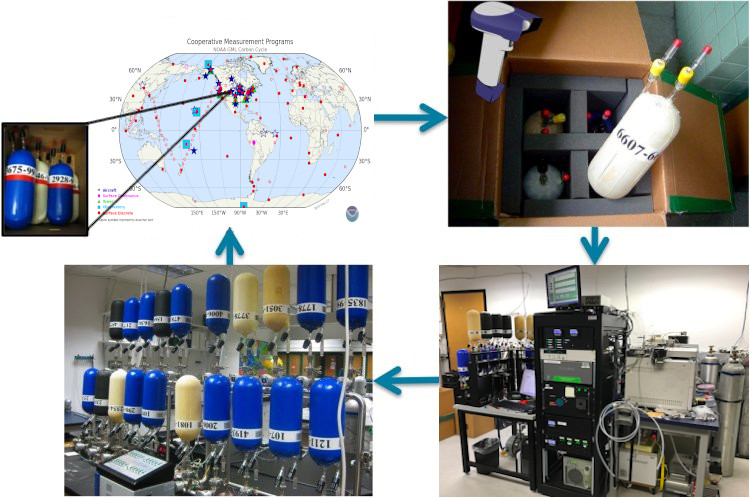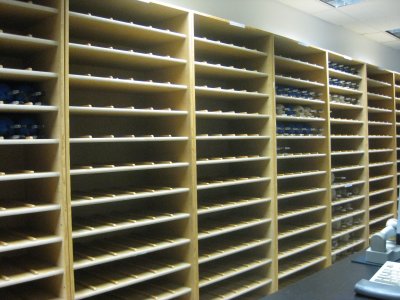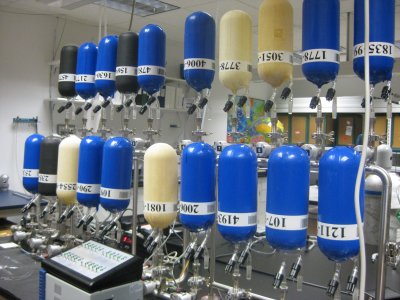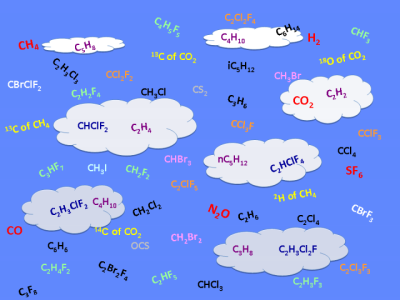Flask Logistics Laboratory
We will start in the flask logistics lab, the same place that the flasks start their journey. After being checked out, the flasks are shipped all around the world from Hawaii to Mongolia, and even to Antarctica!

Trained volunteers and scientists at each of the sampling locations collect the air sample in the flasks (usually in pairs), and send the flasks back to CCGG.
The What’s in the Air video is a look at the atmospheric monitoring efforts being put forth by NOAA’s Carbon Cycle Greenhouse Gases group.

Every year 15,000-20,000 flasks of air are shipped to and from the Boulder Central Facility. With so many identical-looking flasks, it’s vitally important to keep track of them – not only where and when each flask was filled with air, but also recording the results of the measurements. When the filled flasks arrive back at the flask logistics lab, they are assigned an event number that is unique to that particular air sample and is used to identify the sample in a relational database.



About 55 different gases are measured, but not all of the samples get measured for every gas. When a flask arrives in the flask logistics lab, it also gets assigned a “measurement path” that tells everyone in the lab which gases to measure, and in what order.
CO2, CH4 and other key greenhouse gases are measured in nearly every sample in the Greenhouse Gas Measurement Lab, so we’ll go there next. On our way, we will take a short stop to learn why we choose to measure certain gases.

 Previous
Previous